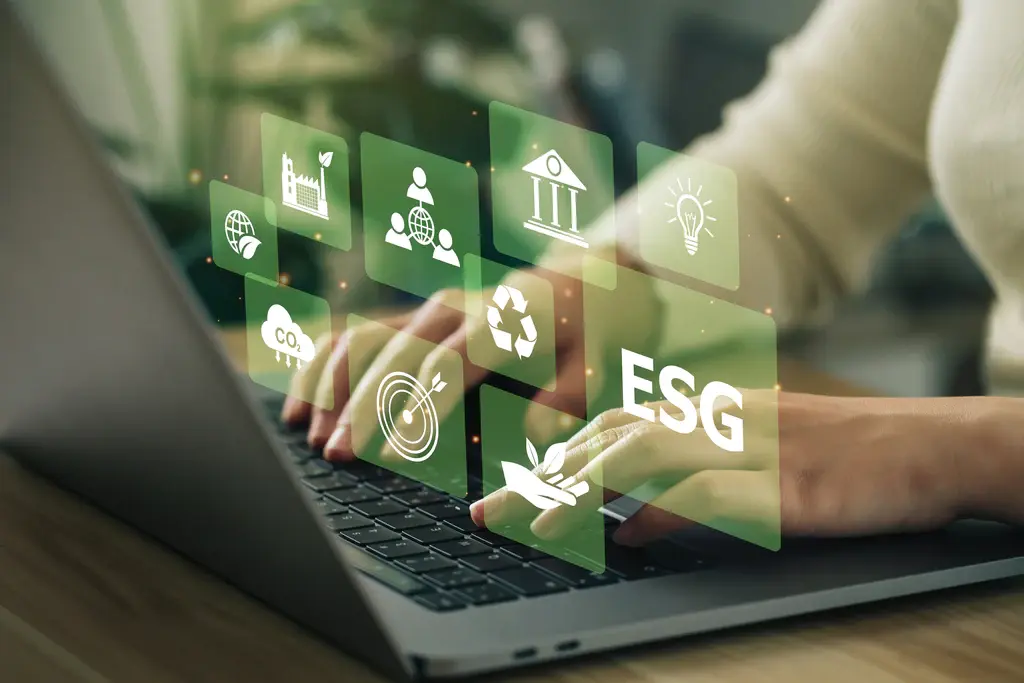In a global survey, the GlobalScan SustainAbility Survey, climate change (94%), biodiversity loss (86%), and water scarcity (84%) arise as the top 3 most urgent sustainability challenges according to experts, with climate change spawning vital concern across all sectors [1].
According to the 2020 Leadership for the decade of action report [2], 92% of CEOs concur that a sustainability merger with the business plan is a critical move for long-term success. In another study by Bain & Company, 88% of limited partners use ESG performance indicators when making investment decisions [3], which is critical when defining new concepts of sustainable finance in the boardroom.

Sustainability is no longer just a consumer trend — it’s become a business imperative. The global move towards conscious consumerism, green investing, and carbon negativity has made the corporate world an essential link in the sustainability ecosystem. Of course, every business has a part to play. But connecting these dots within a single company is already complicated. Imagine it doing so for a whole value chain. Is it possible? Oh yeah, not at all simple, but a massive challenge to tackle. And from what I have seen, several sustainable troupers are ready for the battle. So, let’s roll it!
Concerns around sustainability have broad implications for investors, business owners, shareholders, other stakeholders, and the environment itself. By incorporating sustainability-focused principles and methods into your core business model, you can gain a competitive advantage in market penetration, client and employee engagement, reputational branding, and community social and professional development.
The methodology an organization uses to develop an ESG program depends on where it is in its life cycle. Established businesses may decide to navigate through a fundamentally direct and straightforward approach by identifying the United Nations Sustainable Development Goals (SDGs) that align with their core business models and products and services to explore.
For example, it would strengthen branding and operational synergies for a law firm to focus on pro bono services or for a financial institution to focus on financial education. Then, it transformed it into ESG programs where business risk review processes assess the donations against SDG goals aligned with its mission. So, an easy-to-implement strategy since it was already in the working framework of the daily activities. This approach typically resonates more strongly with younger demographics, such as millennials and Generation Z. It also provides a rallying point for employees. It builds an additional purpose into their existing roles.
Organizations can use sustainability to build a competitive advantage in other multifarious ways. For instance, more digital and tech-driven companies tend to be front-runners in breakthrough sustainable innovations.
For example, some companies are revolutionizing methane monitoring by implementing microsatellite technology in the real-life process. Emissions data comprises a significant amount of critical, highly sought-after information, which companies can capture from millions of emitters around the globe. Through its methane-tracking satellites, companies process all these digital data in real-time and deliver change detection and standardized analytics to their clients’ private, public and governmental sectors within seconds.

Such disruptive models require a deep-dive discussion on the causes behind climate change and its impact, the risks and challenges that it may present, the financial cost to the global economy, and trade-offs of short- and long-term returns, including project phasing and possible solutions within the context of the new business model as the Operating Mode for a sustainable future.
Other sectors, such as nonprofits, can take completely different approaches but also contribute to advancing the sustainability agenda. For example, volunteers’ education, training, and engagement in sustainability initiatives in local communicates are more and more propelled by the third sector and tremendously contribute to project pipelines typically focusing more on the social components of the ESG agenda. The idea behind this nonprofit is to drive climate action through capacity building and engage the local community on the journey.
Regardless of the industrial sector, company size, or market segment, all these companies have a purposeful sustainability vision greater than just a business strategy, which contributes significantly to the creation of new business models and the effective deployment and implementation of their sustainability-driven targets and commitments.
Combining these sustainable commitments well founded in sound backbones structured with sustainable business models and project mode implementation. There are five tactical actions that any company can implement to strive for competitive advantage and become front-runners in some of the critical pillars established as sustainable priorities:

1. Review SDGs with an eye for change and open to new business models. Invest the time to determine which SDGs make the most sense based on your strategy, markets, customers, and revenue model. Next, look at white space opportunities to strengthen your business and make a social or environmental impact. It is imperative that systemic approaches, much similar to the ones taken for IP strategies, are identified by the board and supported by strong technical and financial advisors to ensure clear and workable whitespaces can be pondered adequately for the long-term strategy, even if trade-offs are required, which they usually are.
2. Get your feet on the door – implement! Decide how you will make this practical and actionable. All too often, sustainability is used merely as a marketing tool. How can you do more to be different? A project-based approach is excellent for getting your feet wet and testing the waters. Identify critical projects that can be tested from beginning to end, encompassing all elements of a complete business risk review, including technical feasibility, toxicology analysis, external partnership engagement, reputational liabilities and advocacy, financial incentives, and regulatory landscape. If a project can address all these components in a restricted and efficient timeframe, it will be the ideal strategy to shape and readjust the backbone of the complete sustainable plan for the long run.

3. Define and establish solid and effective partnerships. Identify like-minded organizations or influencers with the exact cause you can partner with for a more significant effect. The reality is that you are the expert in everything aspect of a brand-new defined business model, so you need to consider which areas you may add more value to and the ones you need to learn from the best. Having this scope well set from the beginning is critical to determine key partners across the chain and propelling the speed of development and the probability of success of your plan.
4. Go green digital: measure and monitor. If you can’t measure it, you won’t know whether you are making progress in the right areas. Take advantage of the new digital transformation tools and adequately explore the current-available add-ons to monitor SDG beyond old-fashioned shareholders reports. How you quantify your sustainability initiatives and your financial analysis will determine the degree of liability and traction your project will get. A proper robust analysis connecting the dots between technical trade-offs, economic investments, and ROI is perfect for engaging key stakeholders and maintaining healthy, sustainable finance for the project timeline.

5. Boost communities for scalability and long-term activation. Look beyond a profit motive. Expand your impact by engaging employees to volunteer or build communities around crucial impact areas. Expanding your existing sustainability program into core areas of your business model allows you to gain an edge over your competitors and industry peers in market penetration, client and employee branding, and community development. In doing so, you will create critical points of differentiation and enhance your competitive advantage. On top of the people capital crucial to propagate your program, there is another practical and more technical component of scalability, which relies on the capabilities and technical feasibility (supply, shipment, manufacturing, to mention a few). For that, if current company capacities are not yet optimized, partnering with third parties, tool-manufactures, and external collaborators can also be an intelligent, effective solution to test the grounds of the new development.
“ESG and new business strategies must jointly underpin the company’s business values while generating a breakthrough and intelligible sustainability portfolio aligned to a long-term vision.”
Fostering a real ‘test-learn-change’ business-model transformation is a pivotal step to bridging the gap between corporate ESG and business goals. This process utilizes the gains brought by ESG initiatives, such as improving social standing, increasing employee engagement, and improving operations, which may generate profit in the long run, resulting in a sustainable strategy. So, connecting key advisors from innovation, supply, procurement, finance, legal, marketing, and other business functions into the ESG corporate discussion is essential for deifying the most successful ‘go-getting’ business strategy.
References
[1] The GlobeScan SustrainAbility Survey, The 2020 Sustainability Leaders, GlobeScan, and ERM Sustainability Institute, an ERM Group Company (2020).
[2] Leadership for the decade of action, The United Nations Global Compact and Russell Reynolds Associates — “Study on the characteristics of sustainable business leaders” (2020).
[3] The Expanding Case for ESG in Private Equity. Seemann, Azel, Dale Hardcastle, Deike Diers, Jacqueline Han. Bain & Company, March, (2021)











